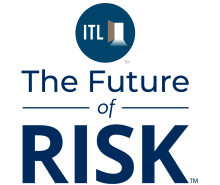In an industry where 70% of digital transformations fail to meet their objectives, it's time to fundamentally rethink how we structure, deliver, and measure professional services in insurance.
For decades, the professional services model has remained largely unchanged: Assemble subject matter experts, bill by the hour, and measure success by project completion rather than value creation. This model has become increasingly misaligned with the realities of today's technology landscape.
The Value-Based Pivot
Consider this scenario: An insurer faces a $50,000 problem—perhaps streamlining underwriting workflows or reducing claims leakage. Traditionally, this would translate into a statement of work detailing X consultants at Y hourly rate for Z weeks.
But in the AI-cloud era, this equation no longer computes.
If technology can solve in hours what once took weeks, why should clients pay for the historical time commitment rather than the value delivered? More importantly, if a solution generates $250,000 in value against a $50,000 problem, shouldn't the compensation model reflect this outcome rather than the inputs?
Insurance Transformation: The Data Reality
Our industry research reveals a sobering truth: 84% of insurance transformation initiatives exceed budgets while only 28% deliver their promised value. This disconnect isn't merely a failure of execution—it's a failure of our fundamental approach.
The most successful transformations in our benchmark data share a trait: They define success in terms of concrete business outcomes (reduced combined ratios, improved customer retention, decreased time-to-quote) rather than technology implementation milestones.
The Path Forward
For insurers and service providers alike, three shifts are essential:
- Value-based contracting: Define compensation structures tied directly to measurable business outcomes, not hours worked.
- Solution-agnostic delivery: Free providers to leverage the optimal mix of human expertise, AI capabilities, and cloud technologies without artificial incentives to maximize billable hours.
- Outcome measurement: Develop sophisticated metrics that track value creation rather than activity completion.
A Real Conversation Happening Now
Currently, discussions with a Top 10 property and casualty insurer revolve around a claims optimization challenge they estimate at $2.3 million annually. The traditional approach would involve a 12-month road map with a team of eight to 10 specialists billing hourly.
Instead, a different approach is possible: a value-based arrangement creating an AI-powered claims triage solution with compensation directly tied to demonstrable reductions in leakage. The projected delivery would be 14 weeks rather than 52, with a smaller team supplemented by purpose-built AI models.
Analysis suggests this approach could deliver a 23% reduction in claims handling costs and 14% improvement in customer satisfaction scores. The insurer's leadership is genuinely intrigued—they've never procured services this way, but the risk/reward profile is compelling.
What's particularly revealing about these discussions is the organizational friction around measurement. The procurement team wants hourly rates; the business leaders want outcomes.
The Imperative for Change
As insurance leaders, we must ask ourselves: Are we still buying and selling professional services based on how business operated in 2000, or are we aligned with the value-creation possibilities of 2025?
The insurance industry has long discussed becoming more agile, innovative, and customer-centric. Perhaps the most profound step toward that future isn't a technology implementation but rather a fundamental reshaping of how we structure the relationships between those who need transformation and those who enable it.
What's your perspective? Is your organization still procuring based on hours or on outcomes?






